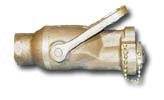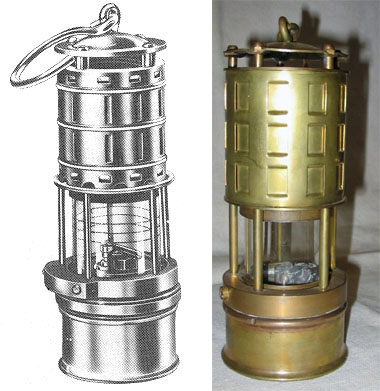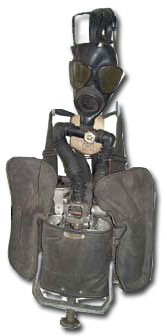| The Type A-3 OBA started replacing the Type A-2 OBA in 1953.
It was a self-contained, closed-circuit device. Oxygen,
generated by chemicals in a canister, could be exhaled,
independent of the surrounding atmosphere, for approximately 60
minutes, the effective time limit of the oxygen supply. The
rubber face piece of the Type A-3 OBA had head straps, a set of
plastic eyepieces, a speaking diaphragm, and a rubber mouth
piece. The harness was at the back of the wearer, with a “D”
ring in the center to attach a life-line. A timer was in view of
the wearer, with a bell that could be set in minutes prior to
space entry; it sounded for eight seconds to warn when the
canister required changing.
Personnel were able to change canisters in a toxic or
smoke-filled atmosphere if required. A quick-start chloride
candle could be used for an immediate supply of oxygen, which
was sufficient until normal reaction started.
The Type A-3 OBA was used to fight fires and to enter a toxic
atmosphere or gas-filled compartment. It could also be used to
work in partially flooded compartments; however, the wearer had
to be extremely careful, particularly when there could be oil or
fuel in the water. Mixtures of oil or fuel with chemicals in the
canister could cause a serious explosion.
The Type A-3 OBA remained in service through the early 1970s,
when they were replaced by the Type A-4 OBA, which is still in
use today. |




